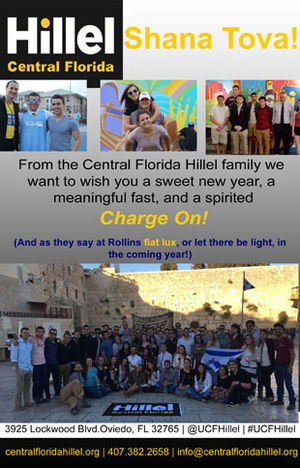America, Israel in black & white
The pictures are fuzzy. Overt, explicit, and legally enforced racism is no more in the United States. Individual blacks, Asians, Jews, and other minorities, and women, can reach as high as the White House, senior governmental and corporate positions, and marry who they choose.
Integration, human relations, political correctness, busing, and affirmative action accomplished a great deal.
But not everything.
A significant incidence of white-black violence associated with police, black activism said to paint an extremist picture, and the killing of cops in Dallas, while a black man has been president for eight years presents a troubling picture that challenges analysis.
One can describe elements of racism both black and white, as well as police use of ethnic profiling, the problematic organization of American police, against a background of criminality that is more black than white, and what may be more guns than people.
At least part of the problem derives from social conditions that are among the most dismal in developed countries. Despite its wealth and the best of its education, medicine, and science, the U.S. is outside the range of other western democracies. Thomas Hobbes’ description from Britain in the 17th century, that life is “nasty, brutish, and short,” now serves for the black ghettos of American cities.
It does not help that American insistence on home rule lays a heavy hand on the organization of police. Professionalism varies greatly from place to place, and local politics affects recruitment, training, and discipline. Black activists and police activists both add to a politicized atmosphere that affects charges, inquiries, and decisions coming after incidents of black deaths at the hands of the police.
It’s a challenge to decide about individual instances in a setting where there may be some justification for police concern about blacks, i.e. unofficial and unacknowledged profiling, especially of young black males. However, it is difficult to escape the conclusion that instances of non-life threatening law violations could have been handled with much less than deadly force, especially when there have been numerous shots fired by one or more officers.
It’s hard to escape ideology. Reliable data is elusive or non-existent. Googling black deaths and police produces lots of pictures of smiling, peaceful looking, young black men said to have been gunned down, along with different annual compilations of all deaths associated with police, black deaths by firearms used by police, deaths while in police custody, or deaths said to be of unarmed blacks.
Against Black Lives Matter, Color of Change, and other African-American activists one can pose spokespeople for various police organizations. As certain that their personnel are being harassed by political activists as the activists are certain about police racism.
After a killing by police in his state, the Governor of Minnesota asked, “Would this have happened if those passengers, the driver and the passengers, were white?... I don’t think it would have... I think all of us in Minnesota are forced to confront that this kind of racism exists.”
The executive director of the National Association of Police Organizations said, “there’s got to be a fear, a concern, that because of the job, because of the uniform I wear, I’m being targeted... unfairly painted with a broad brush... (the governor) exploited what was already a horrible and tragic situation... Whether race had something to do with it or not, I don’t know, because I can’t get into the officer’s head... and neither can the governor.”
The New York Times headlined one article, “Black Lives Matter was gaining ground. Then a sniper opened fire.”
Most prominent among those striving to keep everything on the table, but in proportion, has been America’s black president. He has spoken against racism among police, noted the heroism and unfair stereotyping of police, against the excessive posturing of black activists, and about the threat of national fractures triggered by Dallas. He asserted that the Dallas shooter did not represent African-Americans, and used the occasion to promote his hopeless campaign about gun control.
Texas is an extreme case of gun enthusiasts. In responding to the violence at a black on police demonstration, the cops had to decide who among the numerous people carrying rifles (legal in Texas) was or was not a threat.
It’s impossible at this desk to avoid a comparison with Israel, where the adjective of black is often heard in conjunction with Jews of Middle Eastern background, and where there is more blatant antagonism expressed toward Arabs.
What follows is, of necessity, at least partially impressionistic. As in the U.S., there is more ideology than simple, clear, and reliable statistics.
Among the similarities and differences:
Ethnic profiling is more apparent, acknowledged, and accepted here than in the U.S. Arabs (especially young males) are more likely to be pulled over by police, asked for their identity papers, and forced to wait while the police check if they are wanted. They are more likely to be examined closely by security personnel at the airport. However, ethnic profiling is not entirely about Arabs. Foreign tourists, including Jews, are more likely to be examined closely at the airport than Israeli Jews.
Israeli security personnel are more carefully selected and better trained than many American police officers.
There are charges here of police, soldiers, and other security personnel too quick with violence, against individuals said to be disproportionately Arab, Ethiopian, illegal African immigrants, or lower income Jews from Middle Eastern backgrounds. Yet the incidence of deadly violence used in the context of non-life threatening incidents appears to be much less than what occurs in the United States, even correcting for differences in population.
I know of no Israeli case comparable to an American black who died in police custody after being pulled over for failing to signal a lane change.
Significant is the current trial of a young soldier, accused of the unnecessary killing of a severely injured and inert Palestinian who had been wounded while trying to attack with a knife.
The soldier’s family and other supporters are claiming that the government is fabricating a case against him. Some say that the Palestinian was a terrorist, who should have been killed. There is also support for the soldier’s defense that he feared that the Palestinian could still act against those near him.
Against this are indications that the soldier identified with Kahanist, anti-Arab extremists, was a bystander not involved in the Palestinian’s attack, and acted against explicit IDF policy and training about the use of excessive force.
The soldier’s trial is occurring against the background of another fracture in Israeli society. A committee associated with the Ministry of Education has proposed a significant increase in programs to teach about the history and culture of Jews from the Middle East. An Ashkenazi movie critic for the IDF radio station has been suspended due to comments he posted on Facebook, in which he wrote against “professional campaigners from the East.” He ridiculed the SHAS political party and religious Sephardim who visit the graves of renowned rabbis.
The prime minister joined the furor, with “The extremist comments posted by the cinema critic, in which he blatantly insulted members of the Sephardi community, deserve all the appropriate condemnation.”
While the connection between this brouhaha and the soldier’s trial may not be direct, it is somewhere in the air. The soldier accused is a Jew of Middle Eastern origin, i.e., Sephardi, Involved in the ethnic stereotypes of Israel is that they are inclined to be viscerally anti-Arab, due to family backgrounds of suffering persecution in Arab societies.
Yet there are prominent Sephardim who emphasize the value of co-existence, and see themselves as Arabic-speaking Jews concerned with building bridges.
Moreover, some of the most prominent of anti-Arab extremism comes from religious settlers who are Ashkenazim, with some of the most extreme being American immigrants or the children of Americans. Among their heroes are Meir Kahane and Baruch Goldstein.
Neither the American nor the Israeli pictures, in black and white, are all that clear.
Comments welcome, including expressions of intellectual and/or moral frustration. Irashark@gmail.com.









Reader Comments(0)